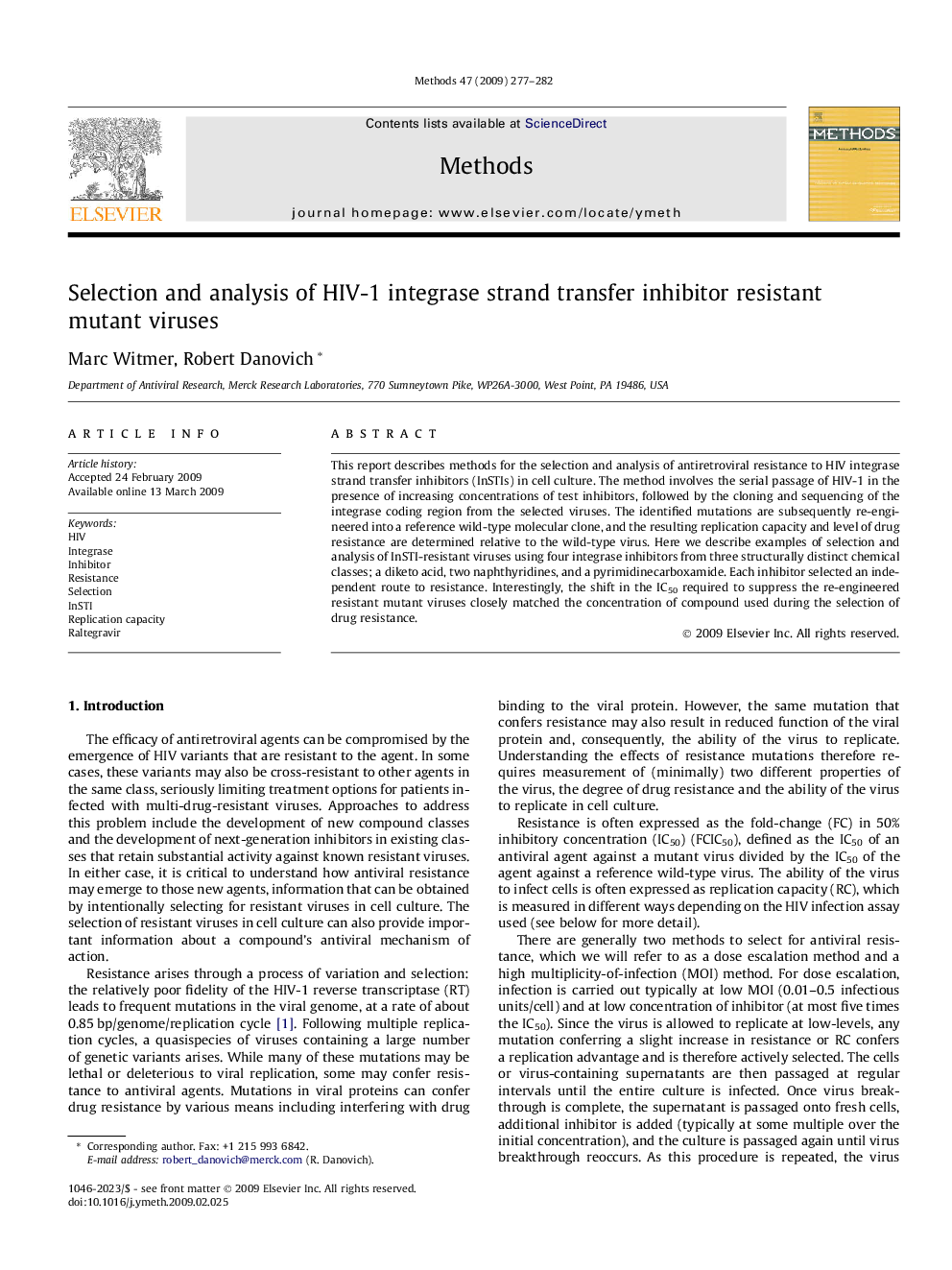| Article ID | Journal | Published Year | Pages | File Type |
|---|---|---|---|---|
| 1994230 | Methods | 2009 | 6 Pages |
Abstract
This report describes methods for the selection and analysis of antiretroviral resistance to HIV integrase strand transfer inhibitors (InSTIs) in cell culture. The method involves the serial passage of HIV-1 in the presence of increasing concentrations of test inhibitors, followed by the cloning and sequencing of the integrase coding region from the selected viruses. The identified mutations are subsequently re-engineered into a reference wild-type molecular clone, and the resulting replication capacity and level of drug resistance are determined relative to the wild-type virus. Here we describe examples of selection and analysis of InSTI-resistant viruses using four integrase inhibitors from three structurally distinct chemical classes; a diketo acid, two naphthyridines, and a pyrimidinecarboxamide. Each inhibitor selected an independent route to resistance. Interestingly, the shift in the IC50 required to suppress the re-engineered resistant mutant viruses closely matched the concentration of compound used during the selection of drug resistance.
Related Topics
Life Sciences
Biochemistry, Genetics and Molecular Biology
Biochemistry
Authors
Marc Witmer, Robert Danovich,
